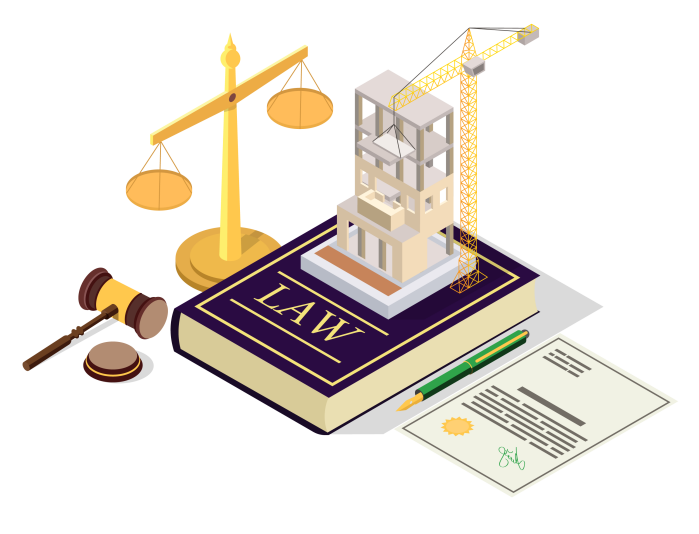Selling a Flat With Cladding
- If your building has a safe EWS1 certificate (A1, A2, or B1 rating), selling and securing a mortgage should be significantly smoother. Always use a conveyancing solicitor experienced with leaseholds affected by cladding issues.
- New industry guidance, including updated RICS Valuation Guidance and the April 2025 Joint Industry Statement from UK Finance and the Building Societies Association, means mortgages are now more widely available for qualifying flats affected by fire safety concerns, easing the selling process.
- Leaseholder protections under the Building Safety Act 2022 largely protect qualifying leaseholders from historical cladding and building safety remediation costs. Crucially, the Levelling-up and Regeneration Act 2023 now ensures these protections transfer to new owners and extended leases.
- You may still need an EWS1 certificate for selling, depending on lender requirements and building specifics.
- Higher risk buildings (HRBs) are over 18 metres (or seven stories) with two or more dwellings, and are treated slightly differently. HRBs built since October 2023 must have a specific digital record to confirm they are safe and can be legally occupied. (The Building (Higher-Risk Buildings Procedures) (England) Regulations 2023).
- If your lease has run short, consider extending your lease for a better sale price.
Good news: Selling a flat with cladding is easier now
New guidance from RICS to valuers, alongside broader industry collaboration, has significantly improved the mortgage landscape for flats affected by fire safety concerns.
This means many more lenders are now offering mortgage products, making it much easier to find a buyer and secure a reasonable price for your property.
Does my flat qualify for lending?
Lenders are generally willing to offer mortgages on properties that meet one of the following criteria:
- Your building is part of a recognised developer self-remediation scheme;
- Your building is covered by one of the established Government remediation schemes (e.g., the Developer Remediation Contracts, the Medium Rise Scheme, or the Building Safety Fund);
- You, as the leaseholder, are covered by the robust leaseholder protections within the Building Safety Act 2022.
What if my flat does not qualify?
If your flat does not meet the criteria for qualifying protections or lacks a satisfactory EWS1 certificate, selling can become significantly more challenging.
Lenders may still undervalue the property, potentially limiting your market to cash buyers only or necessitating a sale at a substantially reduced price. In such cases, you might find it more advantageous to delay selling until remediation works are completed and your building is deemed safe.
However, an undervalued property can present a "silver lining" if you're planning for the long term. It might be an opportune moment to undertake a relatively inexpensive lease extension, anticipating that once cladding concerns are resolved, the property's value should recover.
- Leaseholders protections ensures that you are not liable to pay.
- If you qualify, you will be protected from the financial burden of remediation costs concerning building safety.
- If you're trying to sell, you will need a Deed of Certificate to prove that the leasehold is subject to leaseholder protections.
- Is the freeholder still forcing you to pay for these costs? We can help solve this property challenge.
Do I still need an EWS1 Certificate to sell my flat?
While an EWS1 certificate remains a key document for many lenders, the good news is that new guidance has significantly reduced the instances where one is required for mortgage purposes, making sales easier for many properties.
Each lender has their own specific requirements, but generally, if you can provide an EWS1 certificate that states your building is safe (an A1, A2, or B1 rating), it will undoubtedly facilitate your sale and broaden your pool of potential buyers. However, selling without one may still be possible for qualifying flats, though it could affect the price or buyer options.
The latest RICS guidance (updated December 2022), alongside the April 2025 Joint Industry Statement from UK Finance and the Building Societies Association (BSA), confirms a significant reduction in the number of buildings requiring an EWS1 certificate for lending purposes.
This means many flats that previously struggled to sell due to EWS1 requirements may now find it easier to secure a mortgage for a buyer.
The landlord of the building (typically the freeholder) is responsible for obtaining the EWS1 certificate. While they may attempt to pass on the costs to leaseholders via the service charge or by charging for copies, their legal obligation to provide it for building safety remains.
Selling a flat without an ESW1
While an EWS1 certificate can significantly smooth a sale, obtaining one can sometimes take 6-12 months, and some building owners continue to delay. Certificates are also only valid for five years, meaning older ones may have expired.
You should still ask your freeholder for an EWS1 certificate or to schedule an assessment if one isn't available. However, if your flat qualifies for lending under the criteria we discussed earlier (developer fixed, government scheme, or BSA leaseholder protections), it may still be possible to sell to buyers funding their purchase with a mortgage, even without an EWS1 certificate.
If your EWS1 has an A3 or B2 rating, it indicates the building does not meet adequate safety standards. In such cases, if remediation work has been carried out, a new EWS1 will be required to assess the updated fire safety risk of the new External Wall System. Your conveyancing solicitor will need to confirm this for your buyer's lender.
Crucially, new guidance from the April 2025 Joint Industry Statement by UK Finance and the Building Societies Association (BSA) indicates that lenders are committed to facilitating lending even where remediation is still required.
This applies where a costed and funded remediation plan is agreed upon, with committed dates for starting and finishing all specified works. This significantly improves prospects for selling flats that are still awaiting remediation but have a clear plan in place.

- No Sale, No Fee (Auction, Right to Buy, and Repossession excluded).
- Initial deposit applied to your second transaction with no questions asked or time limits.
- Fixed fee quotes.
- We are on 99% of mortgage lender panels.
- We can solve any property challenge.
What will remediation cost my buyer?
Good news for the buyer: For most qualifying flats, remediation costs for historical building safety defects, including cladding, will not be passed on to them. The Building Safety Act 2022 has fundamentally shifted this burden away from qualifying leaseholders and their future buyers.
This means your buyer is largely protected. The financial responsibility for these repairs typically falls to the original developers, freeholders, or other responsible parties.
As a seller, your key role will be to provide clear evidence during conveyancing that your flat (and the building) qualifies for these robust protections. This usually involves presenting a Landlord Certificate and your own Leaseholder Deed of Certificate, confirming no hidden costs for the buyer.
For full details on who qualifies for these crucial protections, direct your buyer to the official guidance on Gov.UK.
How does this affect the conveyancing process when selling a flat with cladding?
The conveyancing process for a cladded flat requires due diligence from your buyer's solicitor. Your conveyancing solicitor will gather and present the necessary evidence to assure the buyer and their lender about the building's safety and the leaseholder's financial protections. They will need to proactively address a range of fire safety enquiries, primarily focusing on:
- Confirmation of whether the property is cladded, specifying the materials (e.g., ACM, MCM, HPL).
- Details of the last Fire Safety Risk Assessment (FSRA), when it was updated, and if any recommendations have been followed. Any significant alterations to the building would require a new assessment.
- Evidence of a current, legally compliant Fire Safety Risk Assessment for all common parts of the building.
- If an EWS1 certificate is required and available, its rating (A1, A2, B1, A3, B2) and whether it deems the external wall system safe.
- For buildings with an unsafe EWS1 (A3 or B2) or where remediation is still required, evidence of a **sufficient, costed, and funded remediation plan** with committed start and finish dates.
- Crucially, evidence that the building and your lease qualify for the **Building Safety Act 2022 protections**, shielding the buyer from liability for historical cladding and building safety remediation costs. This includes providing the Landlord Certificate and your Leaseholder Deed of Certificate.
- If the building/lease does *not* qualify for these protections, be prepared that a reasonable adjustment to the sale price may be necessary to reflect the buyer's potential future liability.
- Confirmation from the freeholder/management company regarding the presence of fire suppression systems (e.g., sprinklers) and whether refurbishment works have prompted updated fire risk assessments.
- Fixed, competitive legal fees with no hidden costs.
- Expert conveyancing solicitors with proven local knowledge.
- No Sale, No Fee protection for your transaction. Terms apply.
- On 99% of mortgage lender panels.
- Fast completions.
- We can solve any property challenge.
Caragh is an excellent writer and copy editor of books, news articles and editorials. She has written extensively for SAM for a variety of conveyancing, survey, property law and mortgage-related articles.
Andrew started his career in 2000 working within conveyancing solicitor firms and grew hands-on knowledge of a wide variety of conveyancing challenges and solutions. After helping in excess of 50,000 clients in his career, he uses all this experience within his article writing for SAM, mainstream media and his self published book How to Buy a House Without Killing Anyone.











